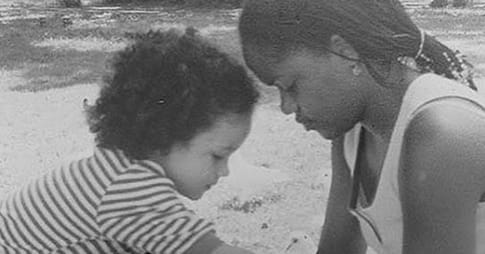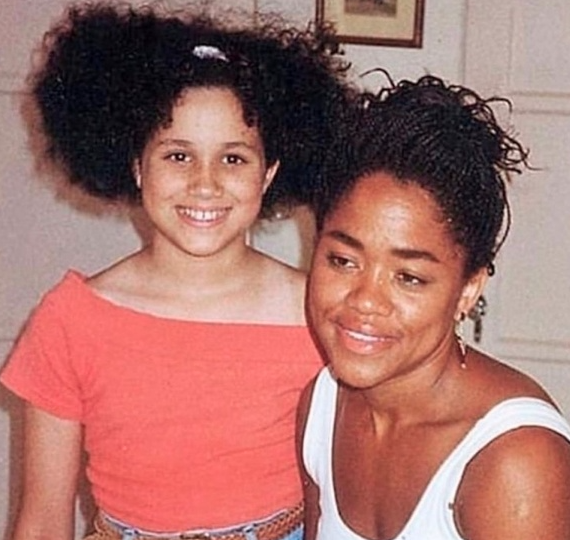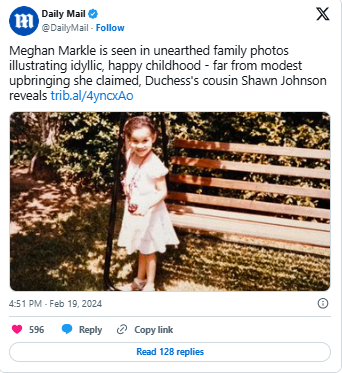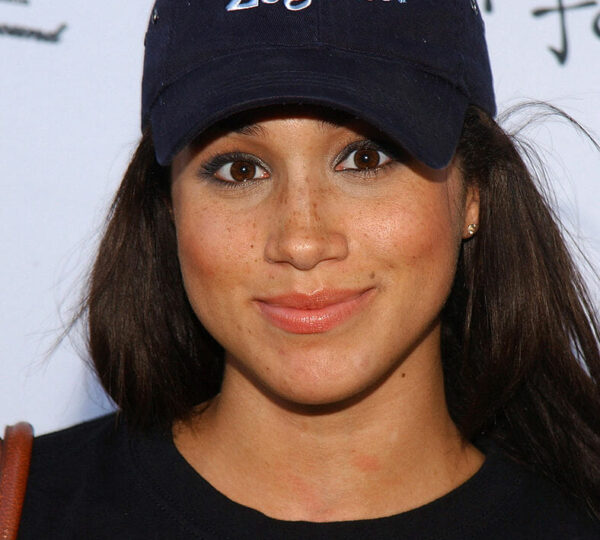Before the royal titles, global headlines, and millions of fans, she was just a little girl heating up microwave dinners, quietly wondering where she belonged. Long before Meghan Markle became a figure of royal fascination, her story was grounded in ordinary struggles and the universal search for identity. Born in Los Angeles to a Black mother and a white father, Meghan didn’t grow up as a shining star in a Hollywood story waiting to happen. Instead, she often felt out of place—unseen in school cliques, misaligned with prevailing beauty standards, and burdened by assumptions about her family.

“My dad is Caucasian and my mom is African American. I’m half Black and half white,” she once shared, capturing the duality that left her straddling two worlds yet feeling fully part of neither. These early experiences shaped the person she would become—her self-perception, her resilience, and the quiet determination to carve out a place in a world that had its eyes on her long before she was ready.

Raised as a “latchkey kid,” Meghan often came home to an empty house while her parents worked long hours. Her mother, Doria Ragland, was a makeup artist, and her father, Thomas Markle Sr., worked in television. “I grew up with a lot of fast food and TV tray dinners,” Meghan said. “Watching ‘Jeopardy!’ and eating microwaveable meals… that was normal.” Yet even amid these ordinary routines, she and her mother faced constant public scrutiny. People often assumed Meghan was white, leading to awkward questions about her dark-skinned mother. Doria recalled being mistaken for a nanny while out in public. “I just remember my mom telling me stories about taking me to the grocery store and a woman asking, ‘Whose child is that?’ My mom replied, ‘It’s my child.’ And the woman said, ‘No, you must be the nanny. Where’s her mom?’”
After her parents separated, Meghan lived with both until age nine, when her father became her primary caregiver. Meanwhile, her mother relocated to a predominantly Black neighborhood outside the Valley, building a network of women who supported Meghan’s upbringing. “She was always so easy to get along with, congenial, making friends. She was a very empathic child, very mature,” Doria said on Meghan’s Netflix show. Still, their relationship was unique. “I remember asking if I felt like her mom,” Doria reflected. “She told me I felt like her older, controlling sister.”

“I was not the pretty one,” Meghan confessed, candidly acknowledging the insecurities of adolescence. “I was a big nerd growing up… My identity was wrapped up in being the smart one.”
Financial struggles were a part of life, but small luxuries—like a $4.99 salad bar at Sizzler—felt special. When her father won $750,000 in the lottery, it provided access to better schools and new opportunities. Early ambition led Meghan to write a letter to her principal at 11, promising to make their school famous one day. By 13, she was working various jobs and discovering a love for acting while spending time on her father’s set.
Yet as a biracial teen, Meghan wrestled with belonging. “I wasn’t Black enough for the Black roles and I wasn’t white enough for the white ones,” she later reflected. For years, she navigated a world where she often felt ineligible for the identity she wanted most. By 33, however, she found peace. “To figure out how to be kind to yourself… to feel happiness—it takes time,” she wrote.

The little girl who once felt invisible became Rachel Zane on Suits, and eventually Meghan, Duchess of Sussex, a royal by marriage. Meeting Prince Harry in 2016 and marrying two years later, she entered a world far removed from TV dinners, marked instead by royal engagements and the joys of parenthood with Prince Archie and Princess Lilibet.
Her journey was not without trials. In her 2025 podcast, Meghan spoke candidly about battling postpartum preeclampsia, a rare, life-threatening condition after giving birth. Later, she endured the heartbreak of miscarriage, sharing her pain in an emotional essay that resonated with countless women.
From microwave dinners to royal palaces, Meghan Markle’s story defies a fairy-tale narrative. It is a raw, honest portrait of a woman who fought to claim her place in a world eager to define her—one who now tells her story on her own terms, microphone in hand, children by her side, and a life fully her own.


